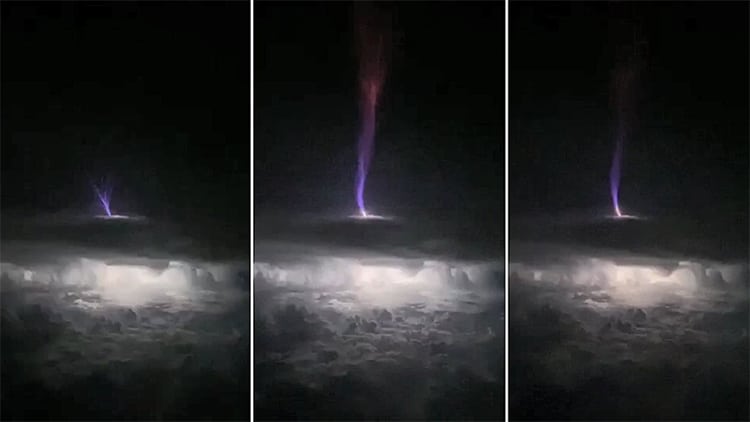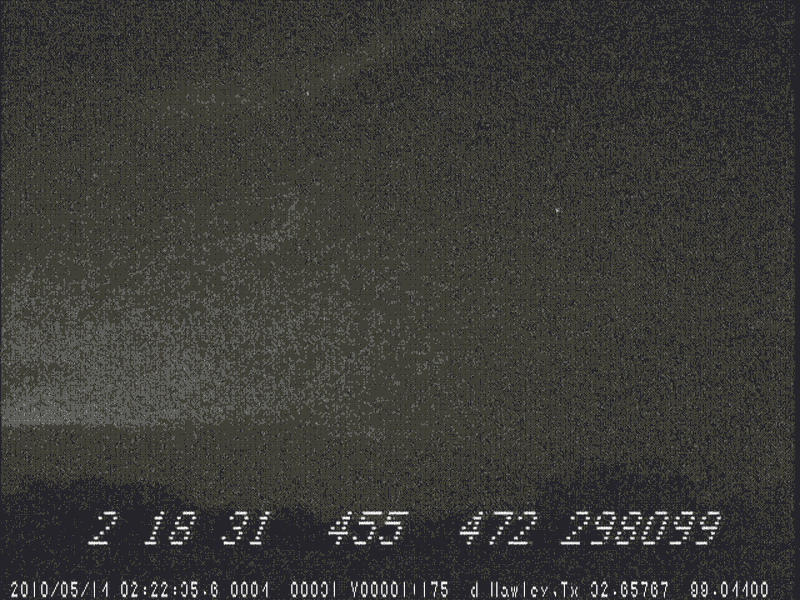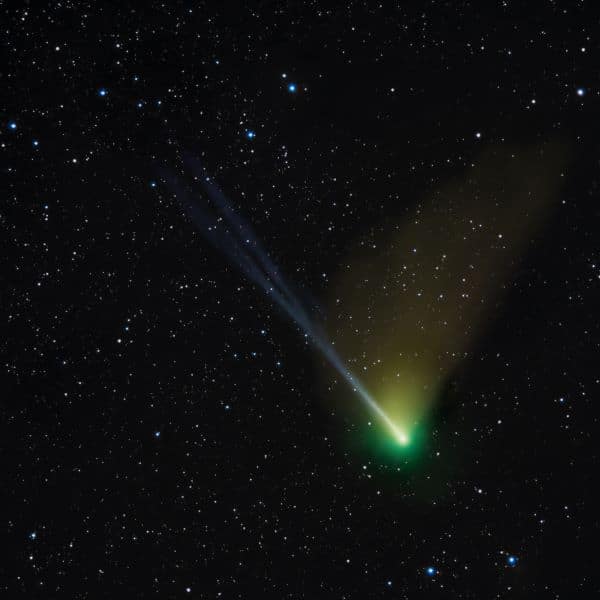
The Oklahoma gigantic jet of light. (Photo: Chris Holmes)
You've probably seen some spectacular bolts of lightning descend from roiling thunder clouds, but did you know that these powerful electrical discharges can also be inverted? Instead of electrifying downward, there is a spectacular phenomenon in which bolts shoot upward from clouds to the lower edges of space. Known as gigantic jets, a recent occurrence in Oklahoma was fortuitously caught on camera by a citizen scientist and registered on scientific devices. This has allowed a team of researchers to learn more about this strange phenomenon, as published in Science Advances.
On May 14, 2018, a gigantic jet sprung up from a cloudtop over Oklahoma, striking the lower edge of space and stretching over 5o miles upward. Caught on camera by a citizen just over the border in Texas, the strike was also recorded by high-tech instruments such as a very high frequency (VHF) lightning mapping system called the Lightning Mapping Array, two NCEI Next Generation Weather Radar (NEXRAD) locations, and NOAA's Geostationary Operational Environmental Satellite (GOES). Researchers led by Levi Boggs, a scientist at the Georgia Tech Research Institute, jumped at the opportunity to investigate this strange phenomenon.
Several unique observations were made about the Oklahoma bolt. First, while normal lightning only carries about five coulombs of charge, the Oklahoma gigantic jet packed a 300 coulombs punch. This is the largest charge ever transferred from Earth's atmosphere to space on record. Adding this charge to the ionosphere (space's lowest level) might have big impacts on satellites and radio communication in space, a topic for further research. Another unique aspect was the cloud that produced the jet. Most originate from highly convective clouds in tropical regions, but this cloud was inland and weak in convection (the float of warmer air upwards).
“Usually gigantic jets occur from tropical storms near the equator that have really tall cloud tops (18 km) that penetrate into the stratosphere and associated cloud top turbulence, but this event occurred in the middle of the continental U.S. and had relatively low cloud tops (14 km) with little cloud top turbulence,” Boggs said. “There was no lightning activity before the gigantic jet in the parent storm cell, which has never been the case from past observations…This allowed the parent storm to accumulate a significant amount of electric charge, which enabled the gigantic jet to transfer the largest amount of charge on record to the ionosphere (300 coulombs).”
The scientists used the data on the jet to examine the behavior of plasma. Plasma streamers and leaders make up lightning, and these reach 400°F and 8,000°F respectively. There remains much to learn, including whether gigantic jets produce terrestrial gamma ray flashes, as has been observed with some lightning. But why did the bolt jump skywards rather than down to Earth? Boggs postulated in a statement, “For whatever reason, there is usually a suppression of cloud-to-ground discharges…There is a buildup of negative charge, and then we think that the conditions in the storm top weaken the uppermost charge layer, which is usually positive. In the absence of the lightning discharges we normally see, the gigantic jet may relieve the buildup of excess negative charge in the cloud.” Certainly there is much more to learn about these strange celestial events.
Gigantic inverted lightning stretching 50 miles into space is a strange phenomenon which is being investigated.

A recent strike in Oklahoma transferred more energy than ever before recorded to the lower edge of space.
h/t: [Vice, Science Alert]
Related Articles:
Here’s How Galileo Sketched the Moon as Seen Through His Telescope in 1609
Astrophotographer Spends Over 100 Hours Capturing Dazzling “Eye of God”
Spectacular ‘Cartwheel Galaxy’ Captured by James Webb Space Telescope
Researchers Discover World’s Oldest Water in a Mine Nearly 2 Miles Underground






















































































